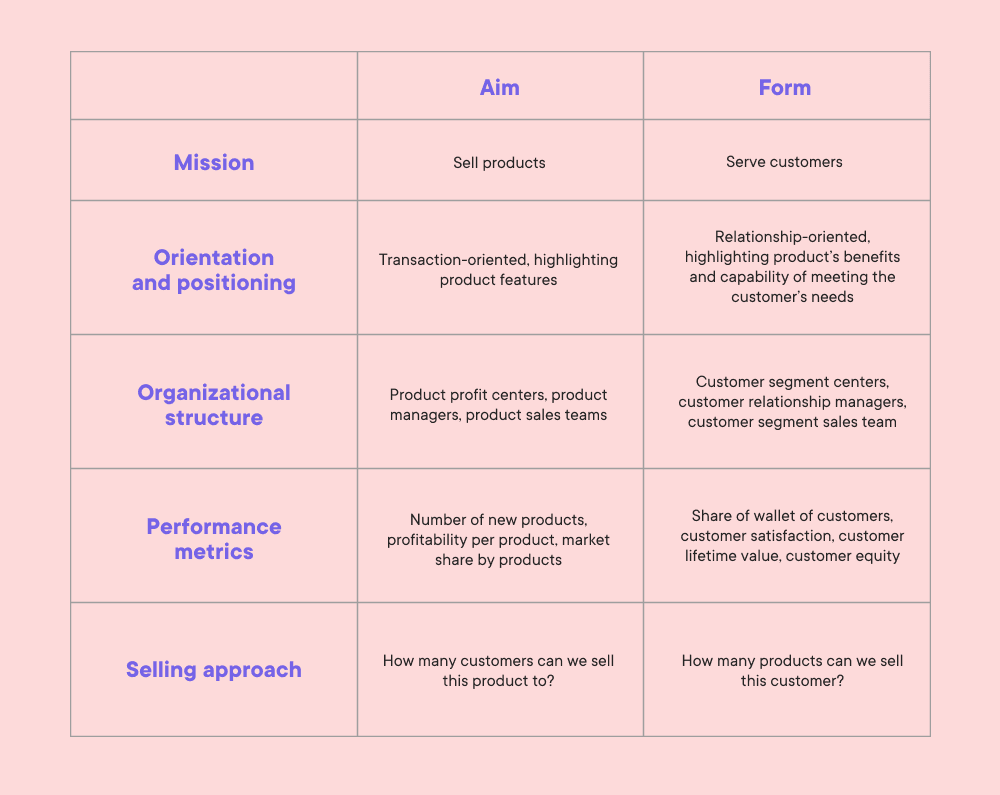What is Customer-Centricity in Product Management?
Customer-centricity has become a widely-used approach among the leading companies in their respective industries. A prominent example of this is Ikea, which builds a complex customer experience in their stores. Restaurants, spaces dedicated to each type of rooms, or even their Ikea Place app which allows users to create a 3D plan of their homes and place their furniture within it, are all dedicated to fulfilling the customers’ needs rather than promoting the features of their products. The fact that such big players understand and utilize customer-centricity means one thing: this is a strategy to pursue. Therefore, in this article, we will focus on the customer-centric approach in product development and product management. We encourage you to keep reading.

Table of contents
What is customer-centricity?
Customer-centricity is an approach that puts the customer in the center, as the driving force for changes in a product or service. It has its roots in the year 1954, when Drucker wrote: “It is the customer who determines what a business is, what it produces, and whether it will prosper.” Despite these words, it was not until the 21st century that businesses and scholars have indeed begun embracing this strategy. (Shah et al., 2006)
The idea behind customer-centricity is quite simple: companies can be more customer centric by actively listening to customer feedback, understanding their needs and adapting their products and services accordingly. They use the data to:
- Find pain points
- Collect NPS
- Create customer personas
- Provide customers with personalized offers, content or advertisements
- Collect feedbacks
- Interview the customers
Customer-centric vs. product-centric approaches
While nowadays many companies know what customer centricity is, they still find the difference between customer-centric and product-centric approaches ambiguous. This problem has been tackled in numerous publications, yet if you also find these two methods confusing, here is a short overview:

Putting customers in the center has strongly affected the way organizations function nowadays. This approach can be observed in almost every action of major businesses, from digital product marketing to building an omnichannel customer experience. But how exactly does it work, and what is the impact of customer centricity on these companies? Let’s take a closer look:
Improved customer satisfaction
By adopting the customer-centric approach, it is possible to make customers simply more happy. Personalized treatment is known to improve customer experience, thus leading to higher retention rates and loyalty. It is crucial, since the costs of acquiring new customers are skyrocketing, and maintaining a stable customer base is less expensive.
Revenue growth
Another benefit of customer centricity is an increase in revenue. According to Forbes (2019), businesses which undertake this strategy are 60% more profitable than their competitors. Lower marketing costs and higher tendency to purchase several products is why this approach is much more financially effective.
Enhanced brand awareness and reputation
A strong customer-centric approach might also serve as an effortless way to improve brand recognition and reputation. In the digital era that we currently live in, news travels like lightning – just a blink of an eye, and everybody knows what is going on. Thus, the word of companies that truly focus on their customers spreads, building a positive image of these businesses among the society.
Customer-centric product development and product management – how to do it?
The case with customer-centric product development and management is simple, yet tricky at the same time. The principle of it is to let customers drive the upgrades introduced to the product. But how to do it?
Listen to feedbacks and act on them
We are far behind the times when responding to customers’ comments “Thank you for your feedback, we will do our best to solve this issue” could do the job. The customers now want visible effects, the feeling that your product, digital or physical, is indeed adjusted to their needs.
Focus on creating an omnichannel customer experience
The borders between the reality and virtual world are fading away. Customers do not only desire a personalized experience – they want it to be consistent along all channels. By creating a framework for unification, you gather more accurate information, which helps you adjust your product even more scrupulously.
Start with building customer personas, but go even further
We have already underlined it in our article on building an app’s pre-launch marketing campaign, but we have to mention it here as well. Creating customer personas is the crucial element of any marketing strategy, yet you can only embrace the customer-centric approach by constantly adjusting the data about your target audience. Yet, collecting data is only the first step. You should go further and prepare a profile of each target persona. Then, your products need to be adjusted to that, by adding certain features, preparing new products or even personalized advertising.
How do we handle customer-centric product development at Boldare?
Our Full Cycle Product Development is designed with the customer-centric approach in mind. We share our knowledge with our clients and use a multistep process to adjust the final software to our clients’ and their customers’ expectations. It works like this:
- We build a prototype – a low-cost option to present the general idea for the product.
- We create a Minimum Viable Product (MVP) – it is the first version of the software that is presented to some of the client’s customers. Its purpose is to gather feedback from the target users and introduce improvements accordingly.
- We prepare to achieve a product-market fit – our team adjusts the product and adds extra features which are tested with the users to create a final software that is tailored to the client’s and their customers’ needs.
The takeaway
Customer-centricity is an approach adopted by all leading companies. It is so because it was proven to be effective. When it comes to product management and development, it involves listening to customer feedback and adapting the product based on data. By doing so, your company may both increase revenue and enhance customer satisfaction.
Bibliography:
Drucker P. F. (1954). The practice of management (1st ed.). Harper & Row.
Shah D. Rust R. Parasuraman A. Staelin R. & Day G. (2006). The path to customer centricity. Journal of Service Research 113–124.
Morgan B. (2019). 50 Stats That Prove The Value Of Customer Experience. Forbes.com
Share this article:






